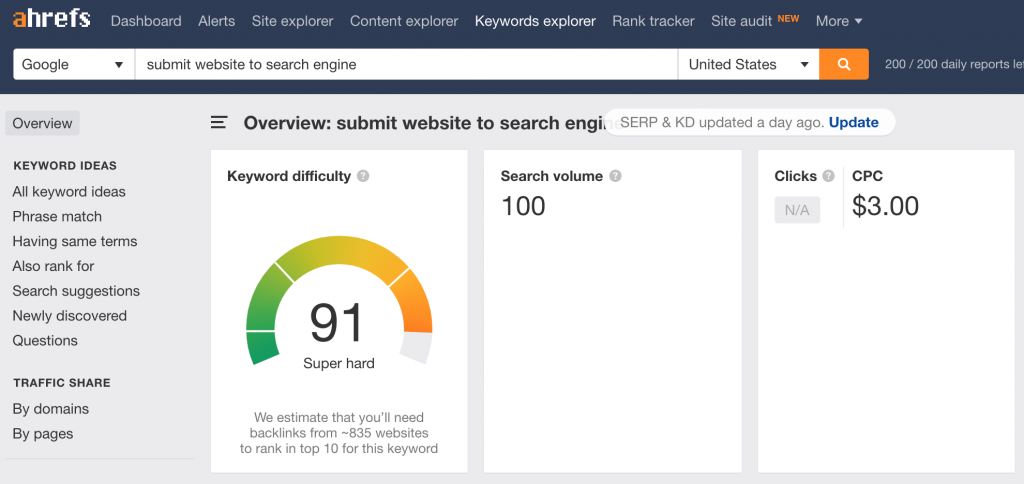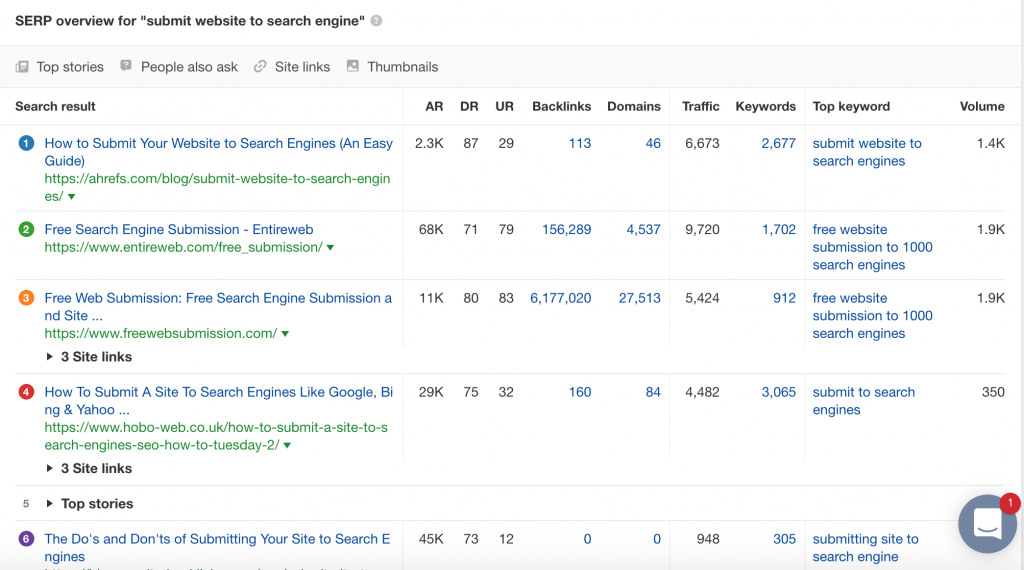9 Common SEO Mistakes in Keywords Research and Content Writing
- Home
- /
- Blog Posts
- /
- 9 Common SEO Mistakes in Keywords Research and Content Writing
All of us have learned how Google has changed in ranking pages and websites in 2019. With these changes, there are some old SEO routines that we made constantly to boost our rankings which actually no longer work towards increasing the ranking. In fact, they are hurting SEO!
Don’t Panic!
I’m here to tell the 9 common SEO mistakes that you MUST STOP making in 2019 and tips to fix them fast.
9 SEO Mistakes in 2019:
We’ll be sharing 3 main categories that directly affect the SEO and for each category, there are 3 mistakes that you need to know that negatively affect SEO:
- Content writing mistakes,
- Domain & URL mistakes, and
- Keywords mistakes.
Now, let’s discuss each topic separately and see how to quickly solve these common mistakes.
But at the same time, you should also keep in mind that you need to avoid these mistakes in every post you create in the future. Today, the internet is different and something that was basic knowledge before is actually self-destructive now.
1. Common SEO Content Writing Mistakes
Content is king. Professionals can’t deny how powerful and important articles are ranking. It’s now about how valuable and relevant they are to the topic you’re writing about. Directly, the articles affect where you’re going to rank on first pages.
But, what are the mistakes you’re doing that are actually weakening your SEO?
a. Regular Update the Website with Fresh Content:
Simply, people would think the more you write the better. Stunningly, that’s not true. Search engines don’t care if you have 10 articles or 1000 articles!
Simply, Google cares about the quality of an article rather than the quantity.
There are millions of sites built every year. You need to stand out with a unique and valuable piece of information and stop focusing on publishing lots of useless repetitive writings.
- Quantity doesn’t affect SEO.
- Write valuable and relevant articles.
- Read a lot to learn more because only experts can thrive in this era.
Pro tip:
It’s best to publish 1 – 2 articles a week and spend the rest of the time promoting that content.
So, let’s say you’ll publish an article every Saturday, then, you have a week to work on promoting it, building backlinks, and furthering your digital marketing strategy.
b. Short Articles
We used to think that the shorter and focused the article is, the better. But, this has drastically changed in 2019.
Neil Patel has published research on the average number of words per article that Google and the people love.
It’s shown that Google loves +2500 articles and they rank the best if they are relevant and valuable.
c. Write For theTarget Audience
Shockingly, writing for the target audience is not the right thing to do! How is that even possible?
If you’re not going to write for the target audience, then who are you going to write for?
Write for LINK INFLUENCERS!
Who are they? These are the websites who will look to the website as a resource on a specific topic.
Then, the page will be a magnet for backlinks. This is one of the things to consider when writing content to automatically attract backlinks.
The more backlinks you get, the better you’re going to rank. This will improve your traffic. There is little harm in starting to dive right into transforming your old articles into “resources”.
2. Common Domain & URL Mistakes
a. Keyword in Domain
Bloggers used to keep focusing on adding the niche in the domain in whichever way possible.
Also, we always thought that having a “.com” domain is a major factor for ranking. Now, things have changed.
Google now is ranking BRANDS! You know, like, “Amazon”, “eBay”, etc.
It’s best to have a unique brand name that people can easily search for and you will be known for it. Recently, it’s highly likely that most of your competitors are already branding themselves. It’s about time you also got started.
b. Long URL
Some bloggers will try to stuff as many words in the URL as possible to increase their chances of ranking for a certain page.
3. Common Keywords Mistakes
a. Keyword Difficulty Based On DA
Sadly, Most Keyword research tools would determine the difficulty of a certain keyword by analyzing:
- The top 10 results according to the number of backlinks.
- The top 10 results’ domain authority (also known as DA).
The DA depends on the number of backlinks the domain has and the amount of organic traffic it gets.
Luckily for running a business, you don’t have to worry about the DA anymore as the main ranking factor.
We used to do the following steps when looking for a keyword:
- Finding a word with low competition.
- Then, checking the monthly search for it.
- Using this word in an article.
You’re wasting your time if you still follow the same ways. This design is outdated and actually decreases your website’s performance.
What if I said that you can rank for words that websites with high domain authority are ranking for?!
The difficulty now depends on LSI! It’s short for Latent Semantic Indexing. The more LSI the word you want to rank for has, the harder it is to rank for it.
Google is analyzing how much an article is covering a topic.
Aim to cover a certain topic with all its aspects and related topics. When you do that, you earn a Topical Authority over the particular topic. Google will then see the site as the resource on this topic and give the website the priority to rank.
Later on, I’ll share how to outrank them and how to measure LSI in this article, so keep reading …
b. Keyword Research Based On Search Volume
Web marketers used to focus on the monthly search volume when choosing their focus word. Well, that’s totally wrong now.
Sure, that volume can be a technical guide but nothing more than that.
You can find keywords with a monthly search volume of 100. Then, when you check the top 10 results, the average traffic you can find that each of them is getting is thousands of monthly organic hits.
How is that even possible?
Ideally, Ahrefs shows the keyword difficulty and the monthly search volume for it. What most bloggers miss is the section below where it shows the average monthly traffic for each of the top 10 ranking websites.
For instance, if we searched for “submit website to search engine”, we’ll see a 90 score of difficulty and 100 monthly searches!

However, when you scroll down to the SERP overview, you’ll find that the 1st website gets +6,000, the 2nd one gets +9,000 organic visitors and so on!

So, it’s not based on the monthly search volume, it depends on the SERP overview that gives a true insight into the traffic you can get.
c. Focus On Long Tail Keyword
Traditionally, a business would focus on long-tail keywords because they thought it’s easier to rank for them. That has changed in 2019.
Now, the focus is on a medium tail keyword where you can cover a topic as a whole.
d. Keyword Density 1%
One of the main things a business would do is put the word in the title, header, description, first and last paragraph, and repeat it to get a 1% density of it.
You must fix that common mistake by simply focusing on adding more LSI keywords rather just focusing on making a 1% density of your main keyword.
How to Measure LSI Keywords?
There’re some awesome tools like:
· Market Muse:
It’s the most successful tool online that collects the effect of LSI keywords for the topic. This tool is designed for businesses and corporations. It costs $15K a year!
I know it’s too much!
MarketMuse only accepts companies and entrepreneurs. You’ll have to go through an interview process and sign a contract.
What’s the best Market Muse alternative?
Luckily for us, the SimilarContent team successfully managed to provide Market Muse tools at a much cheaper cost while delivering the same results!
· SimilarContent:
It’s the number one online tool that replaces Market Muse. You don’t have to be a company or go through a series of interviews.
The best part is that anyone can use this tool and choose the best plan for them.
It determines the keyword difficulty based on the LSI; which is how it should be measured.
What does Similar Content Do?
- Keyword Ranking:
This tool helps you learn the difficulty of the keyword to write about. Moreover, it extracts LSI with great precision guaranteeing higher ranking opportunities on the first page. With years of data, you can be sure that it can give you very precise insights.
- Multilingual:
It supports many languages (+12 languages) from all over the world. So, if even you want to make an Arabic website, it’ll definitely help.
- Analyze article:
After you’ve written the article, it’s time to check how relevant and powerful it is. It’s easy; just put the keyword and article in the designated fields and click on Analyze.
It’ll show how relevant the content is to the keyword you chose. An SEO score from 50-70 is perfect and means that there’s a great chance to rank on the first page.
- Write Mode:
The team knows how troublesome it can be to run so many analyses on the content after modification. That’s why we created “write mode” where you can write and, after a few seconds, it automatically analyzes the article and shows the new score.
- Keyword Research:
Obviously, this tool will help with the keyword research providing LSI keywords and all you must cover on the keyword for better ranking chances.
- Niche Discovery:
If you’re confused and looking for the best topic for the website, then Niche Discovery will discover the perfect niche by providing several ideas for the website.
· LSI Graph:
Honestly speaking, this is not the best tool for LSI extraction. It extracts the related keywords from search results, but you’ll notice that it’s not that accurate. Instead of wasting the time making a list of keywords from the search page at the bottom, it’s all collected in one place.
Seems like the team behind this tool is forgetting one core value: the user needs ample descriptions to work efficiently. Unfortunately, LSI Graph fails in that badly.
WRAPPING UP
So, spend less time trying to enforce SEO myths and focus on avoiding these mistakes. Modern websites can’t stand to face falling traffic. Seeing how you need to commit to stop making these mistakes to stay in the loop, it’s very hard to achieve success.
But is it?
I recommend you start working on this as soon as possible and you’ll see the advantage soon, which will, in turn, urge you to take on the daunting task of improving your practices and ranking higher in SERPs.
Finally, you’ve come to learn the 9 SEO mistakes that you mustn’t make in 2019 to achieve a better ranking. Don’t let these mistakes ruin your ranking anymore.